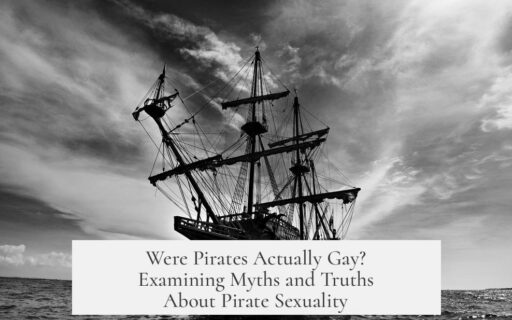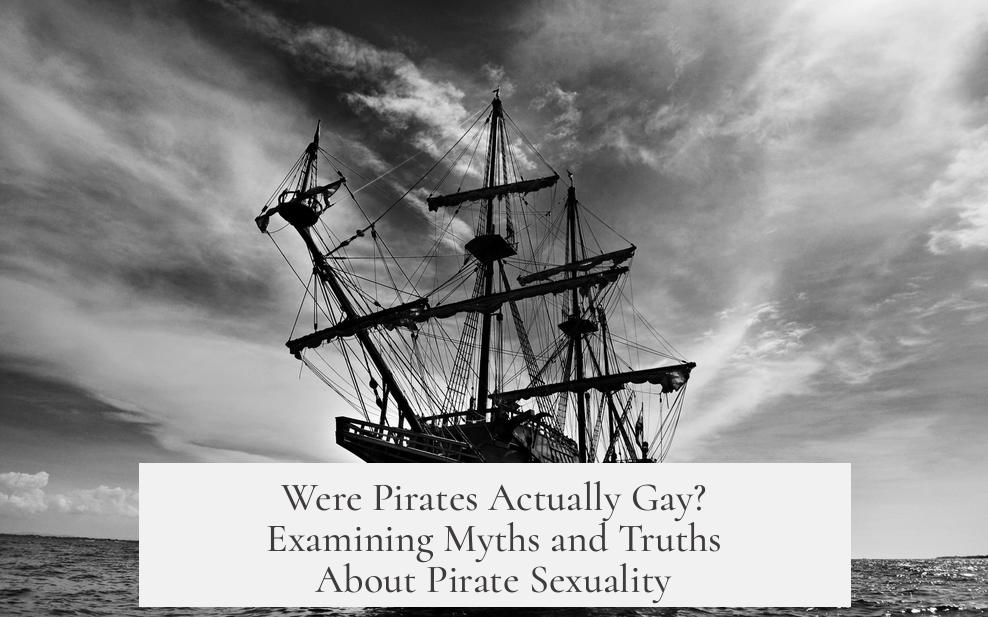Pirates were not categorically gay, but homosexual activity among men on ships, including pirate vessels, did occur and was recorded throughout the Age of Sail. However, widespread assumptions that pirates lived openly gay lifestyles lack strong evidence and are often based on myth and inference rather than fact. The reality is more complex.
Homosexual acts at sea were historically punishable by severe penalties. The Royal Navy enforced strict regulations, such as the 28th Article of War, which made “buggery and sodomy” capital offenses punishable by death. Between 1690 and 1840, naval records show 345 court-martial prosecutions for such acts, demonstrating both awareness and legal consequences for same-sex behavior during long voyages. While some sailors received harsh sentences, others experienced commutations or transportation instead of execution.
Despite these strict laws, naval officers often tolerated same-sex relationships unless they interfered with discipline or violated contemporary standards of conduct. Long periods at sea and skewed gender ratios led men to seek intimacy where possible. This created environments where discreet relationships sometimes existed, especially due to the scarcity of women on board ships or within isolated settlements.
Popular culture has contributed to myths surrounding pirates living flamboyant, openly homosexual lifestyles. Pirate imagery, originating partly in 17th- and 18th-century Caribbean lore and amplified by literature and theme parks, paints pirates as rebels indulging in hedonistic behavior—including sexual activity among men. This stereotype grew from viewing pirates as oppositional to “polite society,” and by Victorian-era prudery, the pirate’s perceived license to reject society’s sexual norms was exaggerated.
It is important to note that pirates, historically, were violent criminals. Their lives were marked by theft, torture, and murder. Their so-called codes of conduct were enforced by violence. The “democracy” aboard pirate ships was a rough arrangement among outlaws, not a progressive alternative lifestyle. Any portrayal of pirates as simply living alternative sexual lives overlooks their brutal nature.
The historian B. R. Burg pioneered research into the sexual behaviors of sailors and pirates in the 1980s, as gay and queer history emerged as academic disciplines. Burg sought to “un-closet” same-sex relationships from historical records, emphasizing the prevalence of male bonding and implying widespread homosexual activity based on demographics and limited evidence.
Burg’s method involved analyzing sex ratios and social conditions, especially in the Caribbean, where male populations heavily outnumbered females. He inferred that such imbalances led men to engage frequently in sex with other men. Although this interpretation brought attention to possible same-sex relationships, Burg’s conclusions pushed beyond solid evidence toward speculation. He acknowledged that acceptance of homosexuality was likely not as widespread or casual as he initially suggested.
Summarizing current understanding:
- Homosexual activity did occur among sailors and pirates, but was illegal and punishable, often harshly.
- Naval and pirate authorities sometimes tolerated such behavior discreetly, but it was never broadly accepted or openly celebrated.
- Myths about pirates being broadly gay or sexually uninhibited stem from cultural stereotyping more than factual history.
- Pirates were violent offenders, not social outcasts embracing alternative sexual identities in a modern sense.
- Historians like Burg contributed to uncovering queer aspects of maritime history but often relied on inference rather than direct evidence.
Pirates’ real lives differ sharply from the myths. They lived under tough conditions, ruled by fear and violence, while disciplines and punishments shaped conduct on ships. Any sexual encounters among men must be understood within this harsh context. Assuming pirates as openly or predominantly gay is an oversimplification unsupported by solid proof.
Readers seeking insight into pirate sexuality should balance the cultural stories driving popular images with the documented reality of naval law, social dynamics, and historical research. Recent scholarship encourages caution when interpreting fragmentary evidence and challenges sensationalized claims without thorough basis.
- Homosexual acts happened at sea but were criminalized and often punished severely.
- Male same-sex relationships on pirate ships likely happened but were discreet and limited.
- Popular pirate stereotypes exaggerate or distort pirate lifestyles, including sexual behavior.
- Pirates operated as violent criminals, not as pioneers of sexual freedom.
- Academic works reveal queer maritime history but do not prove pirates were broadly or openly gay.




